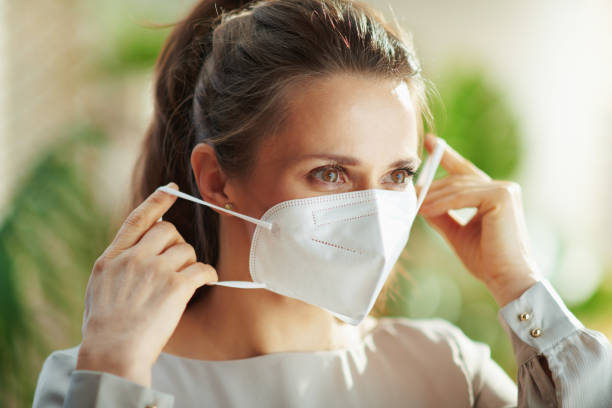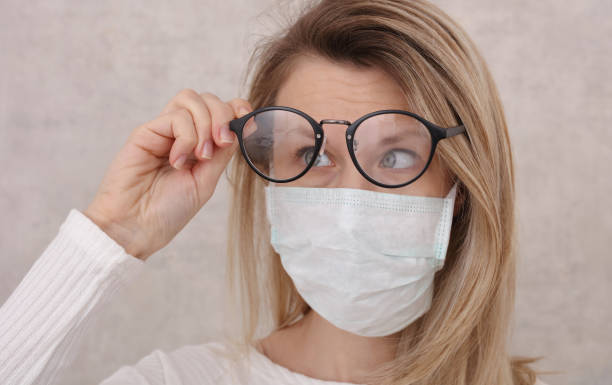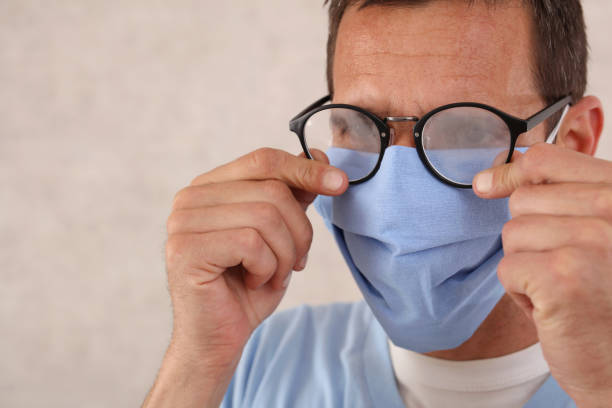To begin, your face masks should have a tight fit both above and below your chin. It should also be above your nose. It should be snug, but not so snug that it cuts into your face when you move your head. Here are some of the most typical problems that people who wear face masks have, as well as 20 recommendations to make you more comfortable.

Because of the loops, my ears are hurting
- 1. Use the best face masks that tie in the back or that have two bands of elastic that wrap around your head, top, and bottom, rather than the more traditional elastic ear loops.
- 2. To prevent chafing behind the ears, link the ear loops with a barrette or a paper clip and place them behind your head.
- 3. Stitch buttons onto the sides of a headband, baseball hat, or stocking cap, and then connect the ear loops to the buttons using a needle and thread.
- It becomes too warm to wear a mask.
- 4. If the mask has more than one layer of cloth, look for one that is made entirely of cotton and does not include any synthetic fibers. Cotton is superior to other materials in terms of the amount of ventilation it permits.
- 5. Tie your hair back into a ponytail if you have long hair.
- Wearing a mask causes my glasses to fog up
- 6. Check that your face masks fit you properly. A mask that does not fit snugly around your face allows more of your hot air to escape through the top of the mask. If you like a more snug fit, look for a mask that ties in the back has ear loops that can be adjusted, or has a nose piece that can be bent.
- 7. Place a face tissue inside your face masks. The fog will be reduced as a result of the tissue’s ability to absorb part of the moisture that is produced by your heated breath.
- 8. Give anti-fog sprays that are available over the counter a shot on your lenses.
- 9. Clean your lenses by rinsing them with soapy water, then either let them dry naturally or dry them with a fresh microfiber towel.

When I have to wear a mask, I have difficulty breathing.
10. Opt for face masks that is made entirely of cotton since they are more breathable.
11. Place one or two drops of peppermint oil at the bottom of the mask. This will assist make breathing easier and will boost the degree of comfort.
12. If you find that wearing a mask causes you to experience anxiety, you should see a physician. Meditation, deep breathing, anti-anxiety medication, or other relaxation methods may be some of the options that he or she may prescribe to you in order to assist in reducing your anxiety. You can read more about How to choose quality face masks by visiting http://caregivingmadeeasy.com/how-to-choose-quality-face-masks/
Because I have been using this mask, my face is starting to break out.
13. Stay away from heavy makeup like foundation, which may clog your pores if you wear it too often.
14. Apply moisturizer to your skin, paying particular attention to areas that are prone to inflammation.
15. Cleanse your face thoroughly before and after using a mask.
16. Make sure to clean your masks on a regular basis.
How to make your children feel more at ease when they are required to wear a mask

17. Find a number of different and entertaining designs for cloth masks, and let your kid pick up his or her favorite one.
18. Playing games while wearing a mask is a great way to get youngsters adjusted to wearing masks.
19. Pretend it’s a mask or a component of a superhero costume you’re wearing.
20. You may experiment with masks that tie or use the button hack that was described before.
If you find that working while wearing a mask is difficult, just keep in mind that for many others, it’s just another day at the office. Masks are an essential piece of protective equipment for a variety of professions, including those in the medical and dental fields as well as construction. If they were able to do it, then so can we!
HOW TO DEAL WITH THE SKIN PROBLEMS THAT ARE CAUSED BY THE USE OF A FACE MASK
Face masks for the Face, COVID-19: It is essential to make sure that the mask you wear is not only comfortable but also allows air to pass through it. Put on a mask that is constructed out of cotton cloth. It is important that the mask has three layers of cloth, that it adequately covers your mouth and nose, and that it is neither too tight nor too loose.
Concerns about one’s skin’s health while wearing a mask are almost certainly a thing. When venturing out into public areas, people should always wear a cotton mask, as advised by several health agencies such as the World Health Organization and the Centers for Disease Control and Prevention in the United States.
Wearing a mask presents a unique set of problems to the skin’s health, despite the fact that doing so is beneficial for reducing the transmission of the coronavirus and slowing its progression. When used often, face masks may cause a variety of skin problems, including irritation, rashes, and acne. Some people find that applying face masks makes their acne worse. Continue reading to learn how to avoid these skin problems and how to properly treat them if you already have them.
Face masks and skin problems
1. To avoid causing irritation to the skin
To begin, it is essential to make use of a mask that is one that is both comfy and breathable. Put on a mask that is constructed out of cotton cloth. It is important that the mask has three layers of cloth, that it adequately covers your mouth and nose, and that it is neither too tight nor too loose. If you do this, wearing a mask may not cause you to have as much skin irritation or as much excessive perspiration.
2. In order to avoid acne
Acne may be reduced in severity by cleaning your face as often as you can, according to dermatologist Dr. Kiran Lohia, who recommends doing so. If you tend to sweat a lot, you should bring a couple of additional face masks with you. It’s possible that acne outbreaks might be caused by sweating beneath the mask. “Make use of a face cleanser that contains salicylic acid. It may assist in clearing up clogged pores and reducing the appearance of acne. Avoid using make-up. Maintain a light and easy manner, and stay away from anything that can cause a blockage on the skin “It is Dr. Lohia’s recommendation.
3. In order to avoid the collection of dirt and dust
After removing the mask, you should also wash your face in addition to washing your hands. It will assist in cleaning out the perspiration and grime that may have collected on your skin and may be the cause of open pores. This will be accomplished by means of the following:
4. When you take off the mask, use caution.
It may be challenging for some individuals to wear a mask continuously without taking it off at any point throughout the day. If you are the kind of person who puts their mask on and takes it off often, you need to be cautious not to put your mask on backward. This not only negates the goal of wearing the mask but also raises the risk of developing skin problems. You can also read about Face mask rules by clicking here.
